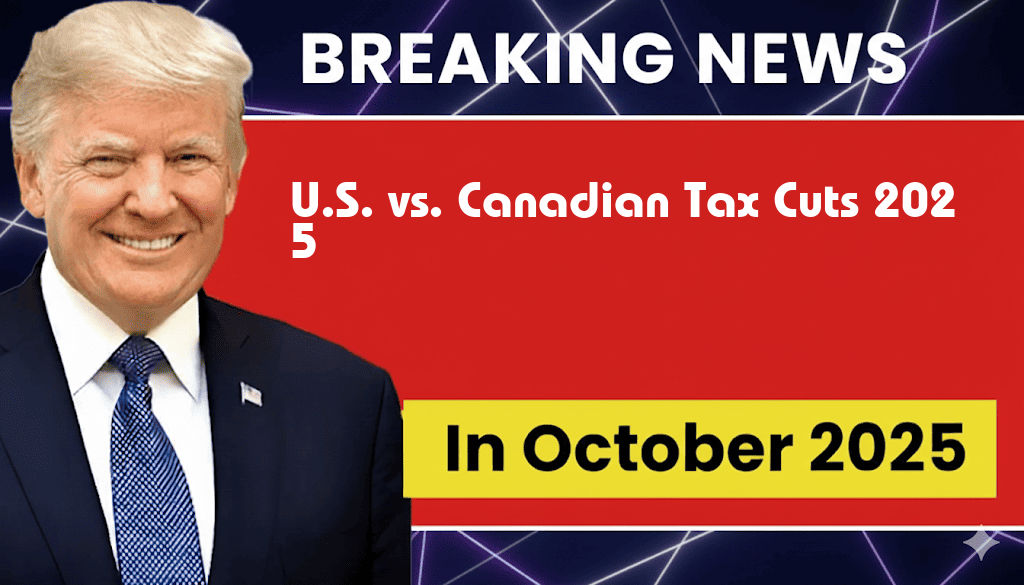As nations continue to navigate the economic landscape shaped by the COVID-19 pandemic, tax policies are under scrutiny in both the United States and Canada. In 2025, the U.S. is set to implement tax cuts amounting to $3,752 per taxpayer, while Canada plans to reduce taxes by C$5,200. This comparative analysis explores the implications of these tax cuts on individual taxpayers and the broader economy in both countries.
Understanding the Tax Cuts
U.S. Tax Cuts of $3,752
The tax cuts in the U.S. are part of a broader initiative aimed at stimulating economic growth and increasing disposable income for middle-class families. These cuts are expected to benefit millions of taxpayers, particularly those in lower and middle-income brackets. The Trump administration’s previous tax reforms laid the groundwork for these adjustments, which aim to bolster consumer spending and investment.
Canada’s Tax Cuts of C$5,200
In contrast, Canada’s tax cuts are designed to provide relief in a different context, focusing on easing the financial burden of rising living costs. The Canadian government has emphasized the need for increased support amid inflationary pressures that have affected many households. This C$5,200 reduction will predominantly benefit working families and is part of a larger strategy to strengthen economic recovery.
Comparative Impact on Taxpayers
| Factor | U.S. Tax Cuts | Canada’s Tax Cuts |
|---|---|---|
| Amount per taxpayer | $3,752 | C$5,200 |
| Target demographic | Middle-class families | Working families |
| Economic context | Post-COVID recovery | Inflation support |
| Implementation year | 2025 | 2025 |
Economic Implications
Both tax cuts aim to invigorate their respective national economies, yet the underlying motivations differ significantly. The U.S. tax cuts are projected to increase consumer spending, thereby enhancing GDP growth. Conversely, Canada’s cuts focus on alleviating immediate financial pressures on families, which may lead to increased savings and reduced debt.
Consumer Spending and Economic Growth
In the U.S., the projected tax cut may translate into higher consumer spending as taxpayers have more disposable income. According to a report by Forbes, increased disposable income often leads to a boost in local businesses and overall economic activity.
Meanwhile, in Canada, the tax cuts are expected to address rising inflation, which has become a pressing concern for many households. With the Canadian economy facing challenges such as higher food and housing prices, these cuts aim to provide immediate relief to families and stabilize consumption patterns.
Long-Term Considerations
While both nations are taking steps to offset economic challenges, there are long-term considerations regarding the sustainability of these tax cuts. Critics argue that significant cuts can lead to reduced government revenue, impacting public services and infrastructure investments. In the U.S., there are concerns about the national deficit, while in Canada, discussions center around balancing support for families with the need for fiscal responsibility.
Conclusion
The tax cuts of $3,752 in the U.S. and C$5,200 in Canada represent strategic moves by both governments to address their unique economic landscapes. As 2025 approaches, the effectiveness of these policies will be closely watched by economists and taxpayers alike, as they seek to understand the long-term ramifications on their respective economies.
Frequently Asked Questions
What are the main differences between the U.S. tax cuts and Canadian tax cuts in 2025?
The main differences between the U.S. tax cuts of $3,752 and the Canadian tax cuts of C$5,200 include the overall economic impact, the demographic targeted by the cuts, and the specific deductions or credits offered. Each set of cuts aims to stimulate economic growth but may affect citizens differently based on their income levels and tax brackets.
How will the U.S. tax cuts affect middle-class families?
The U.S. tax cuts of $3,752 are designed to provide relief primarily to middle-class families, potentially increasing their disposable income. This could lead to increased consumer spending, which is beneficial for economic growth. However, the actual impact will depend on individual circumstances and state-specific tax regulations.
What is the projected economic impact of Canada’s C$5,200 tax cuts?
The Canadian tax cuts of C$5,200 are expected to have a positive effect on the economy by increasing consumer spending and improving the financial situation of taxpayers. Analysts suggest that these cuts could enhance business investment and stimulate job creation if implemented effectively.
Are the tax cuts in the U.S. and Canada permanent or temporary?
Both the U.S. tax cuts of $3,752 and the Canadian tax cuts of C$5,200 are proposed for the year 2025 and may be subject to renewal or adjustment based on future economic conditions and political decisions. It is essential to stay updated on legislative changes that could affect their duration.
How do these tax cuts compare in terms of overall benefits to taxpayers?
While the U.S. tax cuts of $3,752 and the Canadian tax cuts of C$5,200 differ in amount, the overall benefits to taxpayers can vary based on factors such as income level, filing status, and regional tax policies. A comparative analysis suggests that each cut offers unique advantages that may appeal to different segments of the population.
